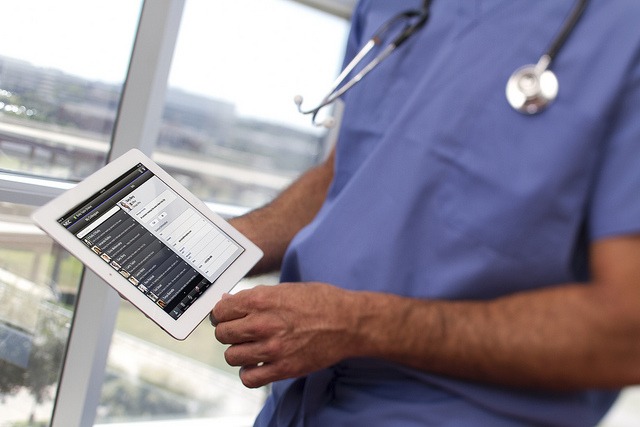Plenty of iconic sci-fi movie titles seem to be thrown around in discussions of wearable devices (the cooler the gadget is, the more often you’ll get a Back to the Future reference). But we’re looking at a not-so-fictional (and not distant) future – will the trends in wearable tech turn into the reality of people buying the products? Let’s take a look at three industries and the smartwatch, the device with the second-highest projected adoption rate.
Healthcare
Much like the magical gadgets used in Star Trek’s sickbays, wearables can monitor your health stats, and see how well you’re sleeping, how many calories you’re burning and if, perhaps, you might need a change in lifestyle. In fact, it seems that this is where it all started, and the best-selling wearable is actually a fitness monitor.
But there are wider applications. The chronically ill can greatly benefit from wearing a monitoring tool. The Apple Watch has been known to save lives. And the data from a recent Goldman Sachs report says it all – wearables provide huge savings opportunities for the healthcare industry – and for the smartwatch wearer: more than half of a surveyed group stated that they would use a wearable if it meant cutting down insurance costs.
Workplace of Things
Human Resources, are you monitoring workers well enough? It’s not Orwell-esque surveillance we’re talking about, it’s making sure your employees stay happy and focused. The trend is so big that it has been dubbed the Workplace of Things, and employees have reported that their smartwatches indeed help them streamline their workdays. In the modern international workplace, 41% of virtual team members still struggle with task management, so good smartwatch apps can be a blessing.
Add another thing to the mix: team up HR and Healthcare and you’ve got a corporate wellness program, which can be extremely effective. How about utilizing the gamification options that smart apps can provide? It may bring a shift in employee culture, and you some serious revenue, considering that big employers are set to account for 17% of all wearable tech revenues by 2020.
Home automation (No robot maid, though. But close.)
Sure, it would be fun to live in a Jetsons-inspired house. A recent survey pointed out that the smart fridge is the no. 1 wanted home device. On the other hand, investing in creating a complex appliance may prove to be fatal to a business, as the costs of the venture can be very high if things go awry. Some ideas also seem a little overwhelming (Stepford Wives, anyone?), so how about a simpler (and cheaper) solution – apps?
A smartwatch application that controls your house alarm or informs you which groceries you might need is already a standard. Even though Gartner predicts 500 smart devices in every home by 2022 (!), it seems like people prefer to approach with caution, starting off small. You need to come up with a solid reason to switch from ‘dumb’ to ‘smart’ – a reason that should involve saving money on bills is as solid as it can get.
Even though the idea of owning a James Bond-type gadget is certainly an incentive, the novelty may soon wear off. So how can wearables boost your business? Smartwatch producers and app developers should remember one thing: customers are looking something that they will really need. So let’s talk sci-real. If you don’t do it, someone else will.
In our next article on the smart tech industry we’ll focus on the future of ad tech – can it work on the wearable device? How? Stay tuned.
author: Natalia Brzozowska
Data sources:
Connected devices and services can save healthcare $300 billion, Goldman Sachs
The Future Smart Home: 500 Smart Objects Will Enable New Business Opportunities, Gartner
Wearable Devices for Enterprise and Industrial Markets, Tractica
The Home of the Future: The Most and Least Wanted “Smart” Products, According to Consumers, Affinova
The Future of Business Collaboration, PGI




